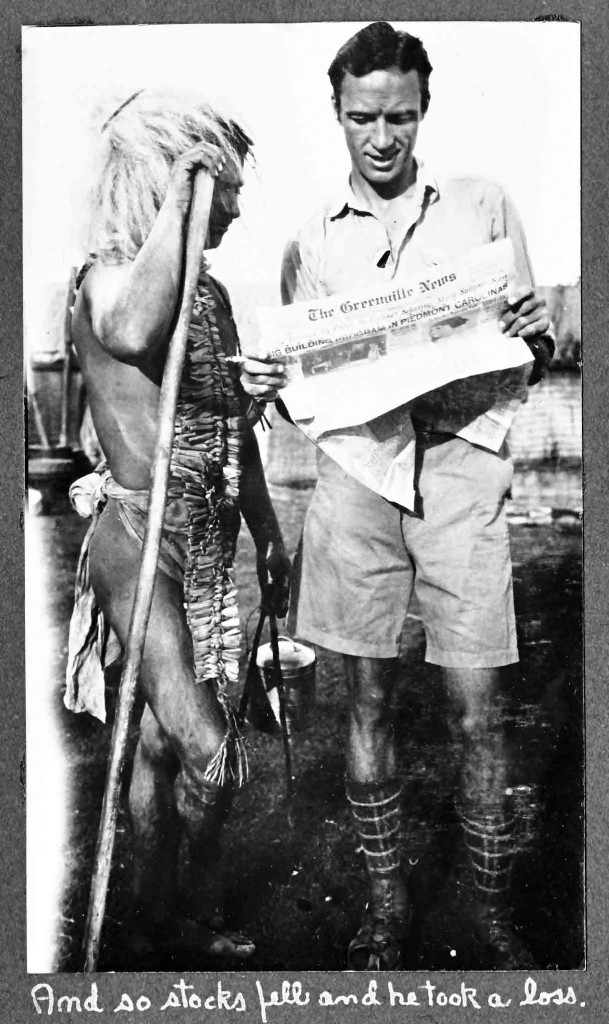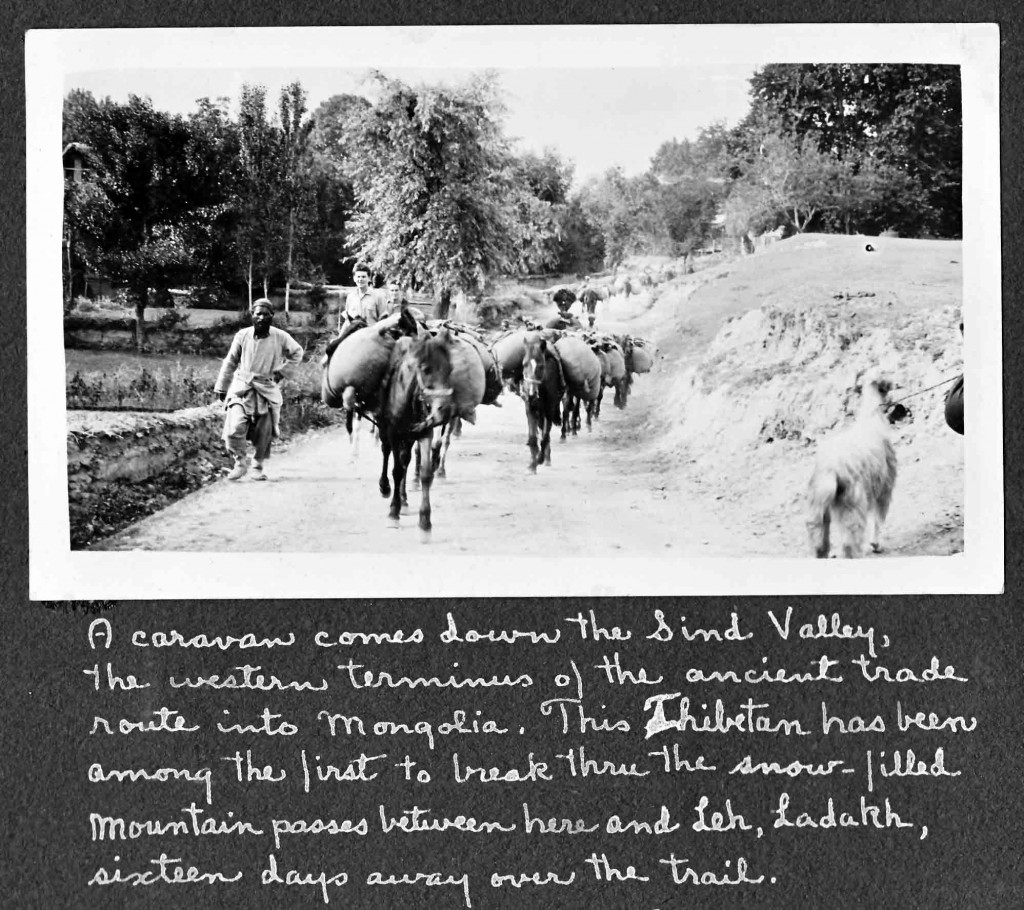Thursday, May 23, 1929
My cop friend put in an appearance this morning while we were at breakfast. He was back talking to Lussoo for a long time. Mort and Frank stayed in all day to get out newspaper stories. I started out for a walk. On the other side of the stream I noticed my cop friend talking to Mort. I called over to get the gore. Seems that Lussoo talked him out of filing a case and the cop came around to get a present or baksheesh from us. Mort laid him out and wouldn’t give him a thing, threatening to get him fired from his job if he brought up a case. Thus the old bird, not so old, went off the loser at both ends. [Maybe the term Ugly American started in Kashmir. . .]
I continued my walk, crossing the Veshau Bridge over the river and heading up the Sind Valley between the rice fields along a winding road by large willow, mulberry, Chinar, and poplar trees. After a while I climbed up a hill and walked along the bank of a canal or irrigation ditch. Nearly walked on a couple of eight-foot snakes parked on the stony path. They were larger than the one I saw yesterday near where we are now anchored. This latter was about six feet long and, when we bothered it, climbed a tree and became nearly indistinguishable from the branches.
 Five miles from our houseboat I came to Wild Bridge, over this swift torrent from up the Sind Valley. At this point the road crosses to the left side of the valley and the mountains close in on the river. It is a magnificent spot.
Five miles from our houseboat I came to Wild Bridge, over this swift torrent from up the Sind Valley. At this point the road crosses to the left side of the valley and the mountains close in on the river. It is a magnificent spot.
The native life along the road is extremely picturesque. Men and women are busy in the rice fields, plowing in the flooded fields, oxen pulling more-or-less-primitive plows. Others are busy about the home, hulling rice, cleaning pans, etc. Most of the houses are built of mud to the height of the second floor. Wood is sometimes used. Reeds supported by a framework of wood wall in the second storey, if there is one. The roof invariably is of reeds woven into a thick matting.
There are any number of small ditches and irrigation canals that feed the rice fields with fresh water. The water is very swift and there are a few mills there to take advantage of it. These are primitive affairs and similar to one I saw a couple of miles from Algeciris, Spain—water tumbling into cupped paddles on a wheel turns this latter, which in turn revolves a big thick horizontal circular flat stone. The grain is poured under this grinder and the ground flour oozes out from under the rapidly turning stone.
Tibetans and Ladakhi are in evidence along the road. They are practically all traders. At noon they unload their pack ponies, turn them loose to graze, and sit around in groups. Some are a sight—slant eyes like their near neighbors, short and stocky, a moustache, and some have a little goatee and a pigtail. Their outfit consists of a small skullcap and what appears to be a few more-or-less-ragged brown capes with very loose sleeves and hanging almost to the ankles. If shoes are worn, they are usually of rope or leather, and in the form of a sandal.
I passed a school by the roadside. Out under a huge Chinar tree sat some fifty young boys in three or four groups. They squatted upon the ground and in their hands they held a small blackboard resembling a paddle. Must have been a slate. Before each group sat a teacher in a chair. Concentration didn’t seem to be at a par. They all talked aloud, got up and walked around, and seemed to pay attention to most everything except lessons.
This evening the moon was perfect. Nearby natives were singing and playing their queer instruments. We went nearer with Abdulla. A marriage contract had been settled today and thus the celebration tonight. The wedding will take place in three days—on May 26th.
